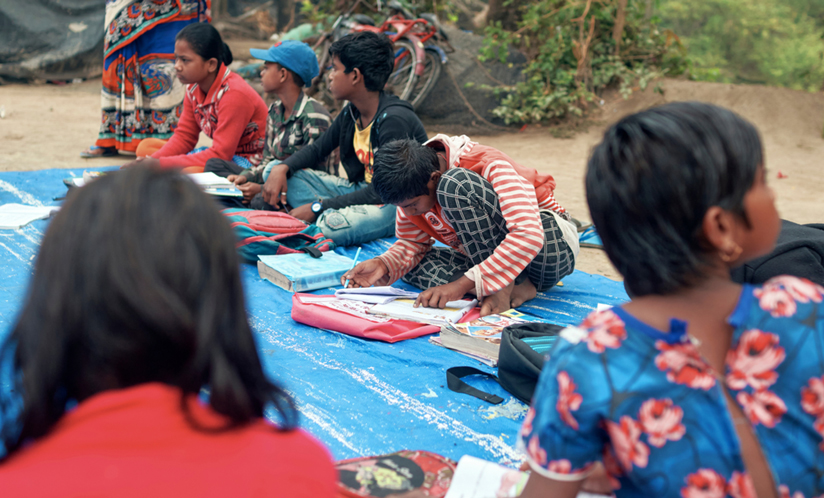Study Finds Low-Cost Behavioral Interventions Effective at Encouraging Safe Disposal of Child Feces in Rural Indian Communities

By Kelly Jordan
A recent study led by Rollins School of Public Health researchers and published in The Lancet Planetary Health reiterates the urgency for addressing barriers to latrine use behavior and safe child feces disposal in India. Bethany A. Caruso, PhD, MPH, assistant professor of global health, is lead author on the article. Additional authors from Rollins include Gloria D. Sclar, MPH; Steven Sola, MSPH; William J. Koehne III, MPH; and Thomas F. Clasen, JD, PhD, Rose Salamone Gangarosa Professor of Sanitation and Safe Water in Environmental Health.
Open defecation is still practiced in 6 percent of the global population, contaminating environments with pathogens that can have serious health impacts including—but not limited to—diarrheal diseases, parasitic infections, pneumonia, and death. While India has substantially increased the availability of sanitation facilities nationally, open defecation and safe management of child feces remain significant public health issues requiring concerted action.
“Having a latrine is necessary to prevent the spread of fecal pathogens, but it is not sufficient,” says Caruso. “Not everyone who have latrines use them, whether due to norms and preference for open defecation, unacceptable quality of the latrine, or lack of awareness that child feces are harmful. The intervention we designed and evaluated focused on increasing latrine use among those who already had latrines. We specifically included activities to encourage child latrine use and safe disposal of child feces, distinct behaviors that previously had been unaddressed.”
Evaluating a low-cost behavioral intervention, the researchers examined latrine use and child feces disposal practices among households that had latrines in 66 rural villages between January 2018 and February 2019 in Puri, Odisha, India. The multi-level intervention included multiple activities to address identified barriers, such as: educational performances for the community promoting benefits of latrine use and safe disposal; community walks through the village to assess fecal contamination; meetings with caregivers of young children to demonstrate and enable safe child feces disposal practices; latrine repairs; and more.
Their findings showed a modest uptake in latrine use among individuals age five and older, but a significant increase in the safe disposal of child feces for those under age five.
“Our results show that a low-cost, low-intensity, theory-driven intervention was particularly effective in improving caregiver child feces disposal behavior,” says Caruso. “These improvements resulted from a few activities embedded within a larger, low-cost intervention, which is promising. However, overall disposal practices remained unsafe for a large proportion of the study population. Further investment is needed to adapt, scale, and improve upon this intervention to prevent environmental faecal contamination and subsequent risks to health due to unsafe disposal of child faeces, in India and beyond.”


